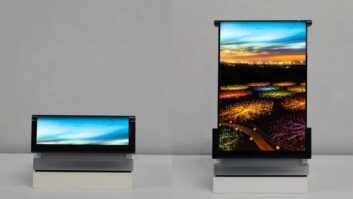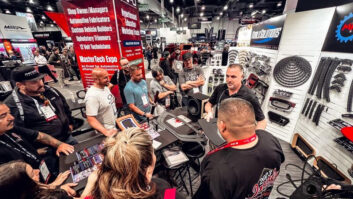Las Vegas — Emerging technologies promising wireless video streaming include mobile WiMAX, DVB-H and MediaFLO, which are on display during the CTIA Wireless convention, here, this week.
In WiMAX developments, fabless semiconductor designer Beceem of Santa Clara, Calif., plans to announce one or two handset suppliers that will incorporate its WiMAX chipsets, which are commercially available.
Mobile WiMAX eventually promises theoretical peak download speeds of up to 70Mpbs per user with expected average throughputs of 20Mbps, the company said. Initial deployments will be slower, with Samsung having demonstrated theoretical 4Mbps downloads with average per user speeds of 2Mbps in tests.
Another company, Panthera, is demonstrating DVB-H middleware and application software for client devices at the Microsoft booth. Microsoft’s Windows Media Video is the video codec for DVB-H in the U.S. Panthera’s application runs on PDA, PDA phones and smartphones using Microsoft’s Windows Mobile 5.1 OS and on XP laptops.
In a development affecting video and voice services, BitWave Semiconductor of Lowell, Mass., is demonstrating its software-defined radio (SDR) technology, which would enable a single handset to change wireless bands and protocols. BitWave is a fabless semiconductor company.
For suppliers, the technology would reduce manufacturing costs by enabling them to build one “network-agnostic” handset that could work on multiple bands throughout the world and on networks as diverse as GSM, CDMA, W-CDMA and WiMAX. A single handset design typically requires the manufacturing of about 12 versions in order to networks around the world using different frequencies and air interfaces, the company said.
For consumers, it would enable cellular subscribers to roam among all wireless networks (from GSM to CDMA and WiMAX and from country to country) without having to change phones or buy dual-format, multiband phones.
For retailers, SDR might provide a single handset that works on competing carriers’ networks, including incompatible GSM and CDMA networks. “SDR radios, as BitWave envisions them, would be reconfigurable in the field,” said marketing manager Eric Org. “An actual reduction in retail SKUs, however, would depend on the carriers’ product strategy, such as colors, labeling, and branding, and not on the radio technology.” Consumers buying a phone at the retail level could build their own phone, the company added.
The company is demonstrating SDR on a laptop-based platform that used a Windows-based GUI to change the RF section’s band and protocol.













